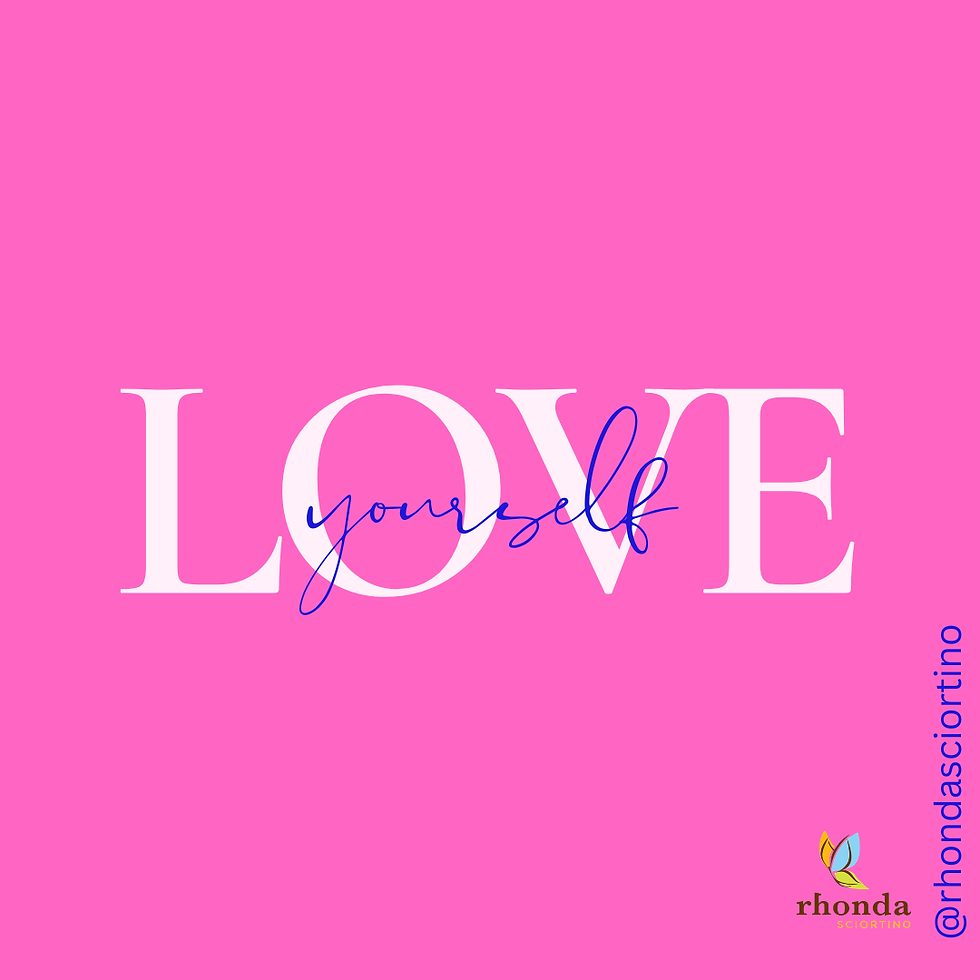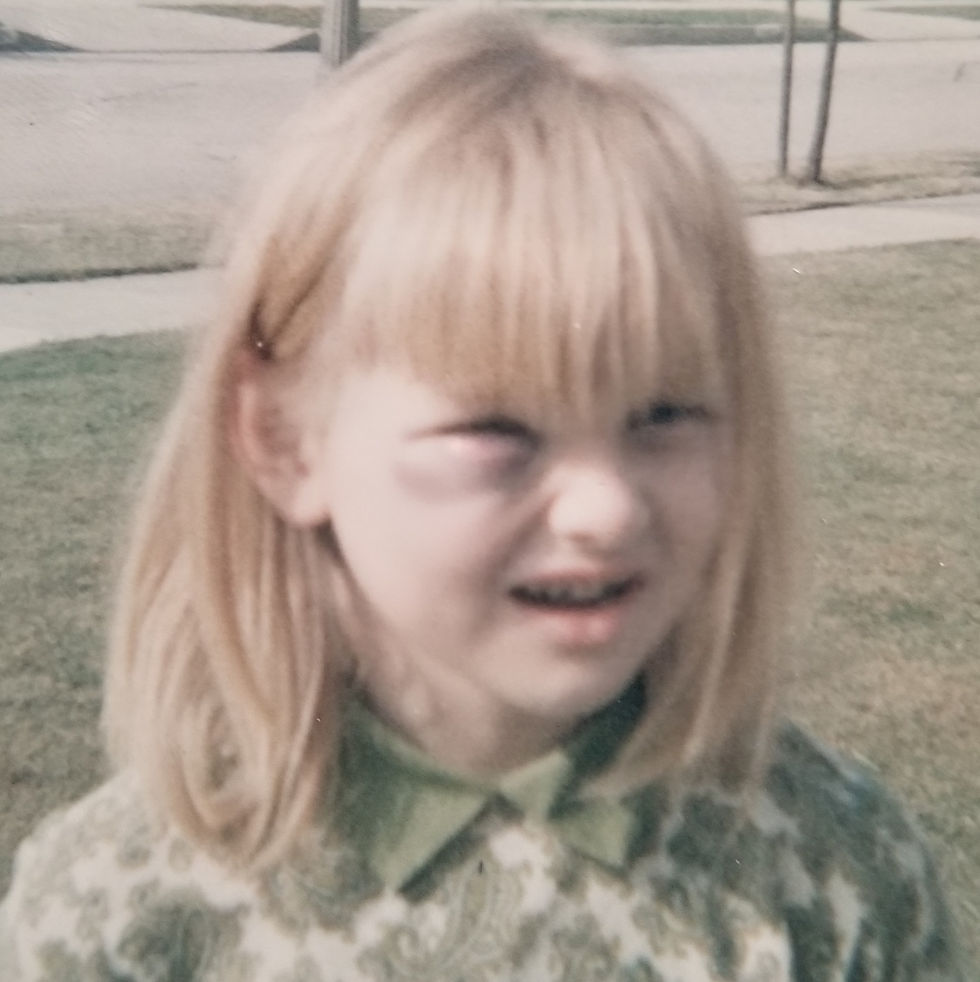Our Clothing Indicates Our Dignity
- RHONDA SCIORTINO

- Oct 22, 2020
- 5 min read
Updated: Oct 22, 2021

She stood on the corner waiting for the light to turn green. She was waiving and blowing kisses to cars that were driving by. One man driving by honked at her. Another whistled. People were staring at her. Parents with two little children were doing their best to cover their children’s eyes and point out imaginary things that were the opposite direction from this young woman who couldn’t have been older than 21.
I sat in the car on the corner waiting for the light wondering what happened in this young woman’s life that led to her standing on the corner wearing nothing except sparkling red five inch platform shoes, fishnet stockings, and leather straps.
Just a few minutes earlier I had been on a two-lane freeway overpass that transitioned from one freeway to another. As I was rounding the curved transition in the fast lane at about 55 miles per hour, I suddenly saw an older lady walking on the shoulder of the fast lane against traffic.
I couldn’t swerve. There was nowhere to go. I just prayed that she wouldn’t stumble out in front of me or lose her balance and fall over the side to the freeway below. Either would have been sure death.
The lady who was staggering each step on the freeway looked like she’d been weathered by decades of sun exposure. Her face looked elderly, but she was wearing the clothes of a much younger woman—a halter top and short-shorts. She was carrying a grocery bag in one hand (probably everything she owned), and one of those big glasses with the exaggerated straw that Las Vegas casinos sell to tourists, in the other. I wondered what had happened in her life that brought her to this place. The older lady could have been the future version of the young woman on the corner.
All of this took me back to my youth when what I wore was mismatched, stained, or torn. If I had to guess, I would say that the lady on the freeway overpass was wearing the only clothing she owned. The naked young girl on the corner, on the other hand, likely chose to what she wore. She might not have had many other options from which to choose, but she surely could have scrounged up something that was made of fabric instead of fishnet.
The point is that whether we’re wearing the only thing we have or we chose to wear something that is inappropriate, what we wear is a fairly reliable indicator of our dignity and self-respect.
I’m intimately familiar with this concept because I was the kid who people looked at with either pity or disdain.
When I was 14, a lady took me to a department store. I had never been in such a place. I had never seen a shopping mall. I’d never seen an escalator or clothes on racks as far as the eye could see. I was overwhelmed. The lady told me that I could pick out one outfit as a birthday gift from her. Any outfit I wanted. Whaaaaaaaaat?!?
As I stood in that fancy place, amid the well dressed people, I was wearing a shirt that was stained and a pair of jeans that were too short. In the 1970’s those were called “high waters,” and were a source of scorn and ridicule. I was very self-conscious about the way I looked in my clothes that had come from a thrift store. I kept my head down and didn’t make eye contact, sure that everyone was looking at me and whispering and laughing about me.
I had never had a brand new piece of clothing in my life. I’d never seen clothes with tags hanging from them. I didn’t understand about the tags. I didn’t know if you were supposed to leave them on or not. I didn’t know that you were supposed to go into the dressing room to try things on before you bought them. I thought she was joking when she told me to go into a little room and take my clothes off. It crossed my mind that someone was going to play a cruel joke on me. But I trusted the lady, so I reluctantly did it.
I tried on the one thing that seemed to be hanging on the rack just waiting for me. It was a blue suit. A SUIT. I was 14. There was nothing in the entire store I wanted more than that suit. It had 4 pieces—pants, a vest, a blazer, and a matching blouse that had a tie at the top.
I put that suit on in the dressing room and looked up into the mirror, and it looked like someone else looking back at me. The young woman looking at me in the mirror stood tall, not slouched over. Instead of eyes filled with fear and dread that she was the butt of everyone’s joke, her face was upturned with eyes slightly squinted and she had a determined little smirk on her face. She looked strong and capable, and the longer I looked into that mirror, the more she looked UNSTOPPABLE.
That was 45 years ago, and just thinking about that day in the dressing room brings those feelings back. I'm grateful to the precious lady who changed my life by buying me an outfit. She didn't just give me clothing, she gave me dignity. Her gesture said, "you're more than who you think you are. Put that outfit on and you'll see who you really are!" Just thinking about it, I sit up straighter, hold my head higher, and I feel the same sense of resolve that I had on that day when I decided that I was going to be the young woman in the mirror.
I decided in that department store dressing room that I was never going back to being that slouched over loser in the dirty, ill-fitting rags. I never have. And I’m still wearing suits—whether they’re in style or not—they’re my style!
I think there must have been times when I was a kid when people saw me when wearing one of my grandfather’s shirts or a pair of my grandmother’s old shoes that had holes and were much too big for me, and wondered, like I wondered about the lady on the freeway and the young woman on the corner, what was going on in my life that I was in the worst part of town looking as I did. Back then, anyone seeing me would probably never have guessed where I would go in life.
All this makes me wonder what would be different for the lady on the freeway and the girl on the corner if someone had given them dignity and shown them who they could be.

Rhonda Sciortino, author of 30 Days To Happiness (featured on Ellen DeGeneres' show and included in her Kind Box), was abandoned at the age of 6 months, raised by a mentally ill man and an alcoholic woman in a bizarre, emotional roller coaster of a childhood. Rhonda Sciortino used the coping skills from her childhood survival to create personal and professional success. Through her speaking, writing, podcast, media appearances, and videos she shares how others can use the obstacles in their lives as stepping stones to a their real success.















コメント